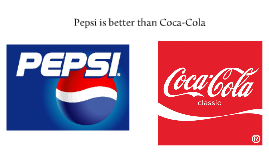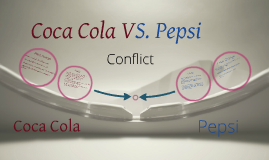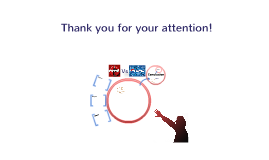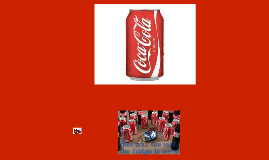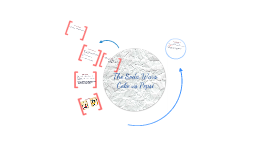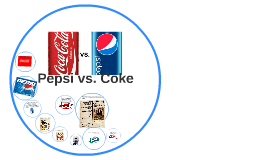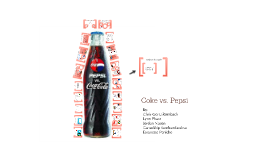Coke vs. Pepsi
Transcript: This case study focuses on analyzing Coke and Pepsi’s history, competition, current situation, global media and market trends, as well as some of their more recent goals of corporate social responsibility and sustainability. We are seeing companies trying to create long term contracts with sugar suppliers to try and insure a steady low cost supply of this price volatile main ingredient. Many major companies have the guaranteed contracts in an attempt to hedge risks. There has been exploration into alternative packaging for drinks. New lighter weight plastic bottles are being implemented to lessen companies impact on the environment, and to, at times, dramatically cut costs. At the end of 2010 Pepsi and then Coke bought the large majority of their bottling network in an effort to try and cut costs. In both cases they were huge deals for Billions of Dollars, but each year the companies are saving hundreds of millions in cut cost. International Marketing Coke Emphasis on supporting the music industry, trying to gain appeal with the younger generation. In the past, Pepsi has sponsored several “Pepsi Smash Concerts” and even partnered with the WB for a televised six part concert series in 2003. Pepsi is currently sponsoring the X factor Plasters the slogan “Where there’s Pepsi, there’s music!” Differing Strategies Ingredient driven Obstacles in global expansion Introduced in 1898 as "Brad's Drink" by Caleb Bradham Pepsi has used over 60 different slogans since its beginning The "Pepsi Challenge" was its most successful marketing campaign in 1975 Pepsi has sponsorship deals in international cricket teams such as Pakistan. In July 2009, Pepsi started marketing itself as Pecsi in Argentina in response to its name being mispronounced by 25% of the population and as a way to connect more with all of the population. Tianfu Cola lobbied to protect local brands Wahaha pushed Future Cola ‘Chinese Cola’ 2000: market share 15% this is why hes dumb Current Company Image Created in China, in 2006, participants had to write and post their screenplays for Pepsi spokesman and famous pop singer Jay Chou. Chinese online users voted on their favorite submission, and the best entry was adapted and produced as a TV commercial. In the end, 28,000 Internet users submitted scripts, 690,000 posted on boards, and 5 million users voted online Shaun Rein, founder and managing director of The China Market Research Group: “The reason why digital interactive marketing campaigns like the Pepsi Creative Challenge work is that they add value by creating a mechanism for consumers to get involved" Today's Market Superfruits CONCLUSION Coca-Cola has a long history of sports marketing relationships, including sponsoring the MLB, the NFL, NBA, and NHL, as well as the FIFA World Cup. Coke selected "Wavin' Flag"as the centerpiece of its $300 million campaign for the 2010 FIFA World Cup Management Conflicts water stewardship: reduce, recycle, replenish energy efficiency - climate protection: reduce, refuel, regeneration sustainable packaging: reduce, recover, reuse healthy communities: economic opportunities, corporate giving, education, HIV/AIDS, disaster relief, environmental initiatives Strengths -Coke owns 4 of the top 5 selling Carbonated beverages,Coca-Cola, Diet Coke, Fanta and Sprite. -They own over 400 brands in 200 countries or Territories -Coke has a huge international presence, enjoys a “head start” over pepsi in lots of the developing international Markets -Pepsi as a competitor to boost their production and performance Weaknesses - During this economic downturn Drink companies are struggling to make the same profit margin with increased input prices with a demand for a stable price. Opportunities -Cokes biggest opportunity is increasing their flagship Coke carbonated drinks in the growing South Asia and South America markets. -It is paying to continue to gather new brands and drinks that appeal to different people. Threats -Competition from Pepsi -Fluctuating sugar prices Current website boasts images of vintage ads Uses language such as "heritage." The Pepsi Cola Trademark Resistance from Local Brands Industry History Consumer Expression Differing Strategies Expansion 3,500 + brands, 700 plants Low soft drink consumption 144 bottles annually vs. 462 in the United States Branched out to produce food products and purchased fast food chains such as Pizza Hut. Both Coke and Pepsi compete for relations with fast food chains for exclusive serving rights. Coke established ties with Disney, McDonald’s, and Subway, while Pepsi holds relations with “Tricon,” Taco Bell, KFC, and Pizza Hut. Pepsi also had more of an emphasis on marketing in retail outlets while Coke has focused on fountain sales. By: Chris Gertz-Rombach Lynn Pham Jordan Nason Camolthip Sambandaraksa Emanette Peniche Tubainas: cheap and carbonated beverage sold throughout Brazil The history of “soft drinks” starts in Paris where vendors sold a "lemonade" like mixture on their backs






